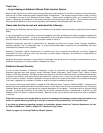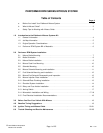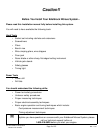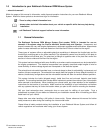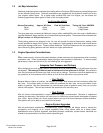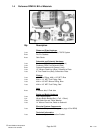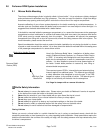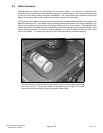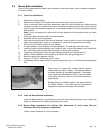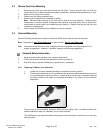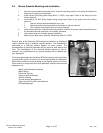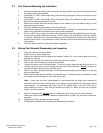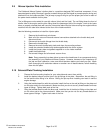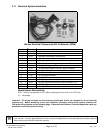
2001 Edelbrock Corporation
Brochure No. 63-0040
©
Rev. 11/01
Page 5 of 25
1.2 Jet Map Information
Edelbrock engineering has conducted dyno testing with the Performer RPM system to provide jetting maps
for two different jetting levels. These jet combinations are supplied with this system to enable you to vary
your engine’s power output. On a typical mildly modified 350 cubic inch engine, you can expect the
following approximate power gains for each of the two jetting levels:
Pro-Flo Jet Map #70070
Nitrous/Fuel Jetting Approx. HP Gains Final Air/Fuel Ratio Timing Adj. Over 4500RPM
59/39 100hp 10.5:1 8 deg Retard
72/50 150hp 10.8:1 8 deg Retard
The dyno tests were conducted at Edelbrock using a mildly modified 350 cubic inch engine Modifications
included Edelbrock intake manifold, dyno headers and improved ignition. These tests were conducted with
950 psi nitrous and 48.5 psi fuel pressure.
These jetting patterns are designed to be rich and will provide the above listed power settings under
normal operational usage of this system. Any variations in jetting patterns other than what is listed above
and engine damage could occur. Please contact Edelbrock Technical Department with any questions you
have concerning jetting patterns and their effects on engine performance.
1.3 Engine Operation Considerations
When used correctly, nitrous oxide safely elevates cylinder pressures and temperatures while increasing
combustion rate. These characteristics make the engine more sensitive to detonation. To ensure proper
performance, engine and drive line life, the following tips are suggested:
• Adequate Fuel Pressure and Delivery
When designing your fuel system, plan on your pumps and lines flowing at least 0.10 gallons per hour per
horsepower. The testing at Edelbrock was conducted with a fuel pressure of 48.5 psi. Any variations
from this fuel pressure will cause your final air/fuel ratio to change. Consult our technical department for
any questions on fuel pressure and it’s effects on final air/fuel ratios when using nitrous oxide.
• Fuel Quality
Because Nitrous oxide is an oxidizer, fuel selection is critical. Both octane and fuel consistency affect fuel
burn rate. The oxidizer quality of nitrous oxide will accelerate the burn rate, so we recommend a high
quality of gasoline. We also recommend you use the same grade of gasoline every time you use your
nitrous oxide system. This will help maintain the same fuel burn rate every time.
• Cast Pistons
With all nitrous oxide applications, forged pistons are highly recommended. Because of heightened
potential for detonation, cast pistons are more prone to failure and cannot handle horsepower increases
over 125hp. Never initiate your nitrous system before you are at full-load, wide open throttle conditions.
Cast pistons will not be able to survive this kind of stress.
• Engine System Upgrades
With all performance modifications, complementary system upgrades will always serve to elevate the
consistency and longevity of an engine, especially when using nitrous oxide as a power adder.
Modifications such as ignition upgrades, free-flowing exhaust, camshafts, cylinder heads, manifolds can
all add to the performance of a nitrous oxide injected engine.



